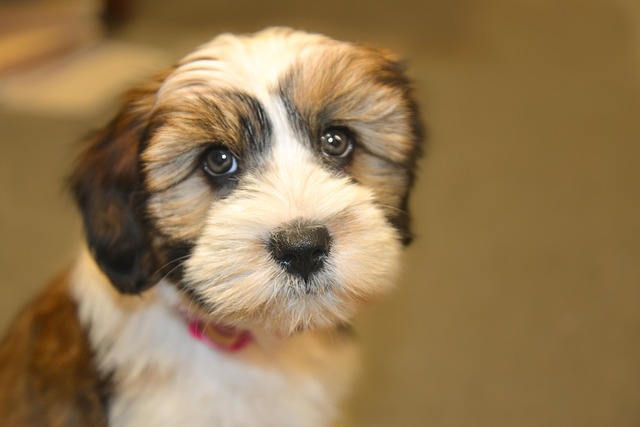
How do i train my dog to be obedient?
Watching your dog dart across the park ignoring your calls isn’t just frustrating—it can put them at risk near busy streets or public spaces.
When the cute little Teddy enters our doorstep, it is like a sweet little candy, bringing endless joy to life. However, the toilet training of teddy dogs has become a "sweet annoyance" for many owners. Watching the corners of the house being randomly marked by dogs, it's inevitable to have a headache.
Understand Teddy's excretion pattern
Teddy, like other dogs, has its own excretion pattern. Usually, they have a significant excretion demand within 15-30 minutes after eating and drinking, as well as after waking up and playing. Careful observation of these time points can help us better grasp the timing of training. For example, after feeding the little teddy bear, you can pay attention to its behavior. Once you notice that it starts sniffing and spinning around, it may be a signal to excrete. Understanding these patterns is like obtaining the "key" to training, laying a solid foundation for subsequent training.
Preparation before Training
Before formal training, it is necessary to prepare some necessary items. A dedicated dog restroom is essential, which can be either grid or tray shaped for easy cleaning. If you don't want to use the dog restroom, you can also prepare a larger urine pad and place it in a fixed corner. It is best to choose a urine pad with the function of inducing defecation, which can attract Teddy to excrete on it.
In addition, prepare some snacks as rewards. Teddy has no resistance to food. When it makes the right excretion behavior, giving snacks as a reward in a timely manner can help it quickly understand what is right. For example, chicken jerky, cheese cubes, etc. are all snacks that Teddy loves.
Gradual training steps
Select a fixed location: Determine a fixed excretion location for Teddy, and once selected, do not easily change it. This location can be a balcony, corner of the bathroom, etc. at home, ensuring good ventilation and away from Teddy's resting and eating areas. Place the dog restroom or urine pad at this location to familiarize Teddy with the scent.
Guiding excretion: When the teddy bear has a need for excretion, gently hold it to a fixed excretion location. You can hold it while softly saying simple and clear instructions such as "go pee" and "go poop", gradually linking this instruction to excretion behavior. At the beginning, Teddy may not understand, but in this process, it is important to have enough patience, not to force it, but to gently guide it.
Timely reward: When Teddy finishes excreting at a fixed location, give him enthusiastic praise and snack rewards immediately. You can touch its head and happily say 'Baby, you're amazing', letting it know that if it does it right, it will be loved and delicious by its owner. This positive incentive can strengthen its behavior of excreting at a fixed location.

Common problems and solutions in training
Random excretion: If you find Teddy defecating randomly in other places, do not scold or beat it loudly. This not only fails to solve the problem, but also makes Teddy feel scared and confused, and may even lead to a sense of fear towards its owner. The correct approach is to clean the excrement with a tissue or urine pad, then place it on the dog toilet or urine pad, let it smell its own odor, and guide it to a fixed location again.
Repeated mistakes: During the training process, Teddy may experience repeated mistakes, which is normal. After all, it is still in the learning stage and requires time to consolidate memory. At this point, the owner should maintain patience, continue training, and reinforce correct behavior. You can increase the frequency of training to help Teddy develop habits faster.
Consolidate training achievements
As Teddy gradually develops the habit of defecating in a fixed location, he cannot let his guard down. To continue consolidating the training results, regularly check the position and cleanliness of the dog restroom or urine pad to ensure a stable odor at the discharge site. At the same time, in daily life, it is also necessary to continuously use excretion instructions to strengthen Teddy's memory of instructions.
Training a teddy dog to urinate and defecate is a challenging yet incredibly heartwarming process. In this process, we grew together with Teddy and witnessed every progress it made. Every time it obediently defecates at a fixed location, it is the result of our efforts. Let's use love and patience to help Teddy develop good habits, so that he can grow up healthy and happy under our care, and spend every beautiful day together.

Watching your dog dart across the park ignoring your calls isn’t just frustrating—it can put them at risk near busy streets or public spaces.

New puppy owners often find themselves rushing to clean up accidents before they set in, and that’s where puppy pad training becomes a game-changer.

If you've noticed your dog's waistline disappearing and your veterinarian has mentioned those few extra pounds, your first instinct might be to simply reduce the amount of food in their bowl.

Training a dog to use a designated spot indoors isn’t as daunting as many new owners fear, but it does take consistency and an understanding of your pet’s needs.

That moment of dread on a walk is all too familiar for many new dog owners. You see another dog approaching down the sidewalk of your neighborhood

If the sight of another dog on your neighborhood walk makes your heart sink as your own dog erupts into a frenzy of barking and lunging, you're not alone.